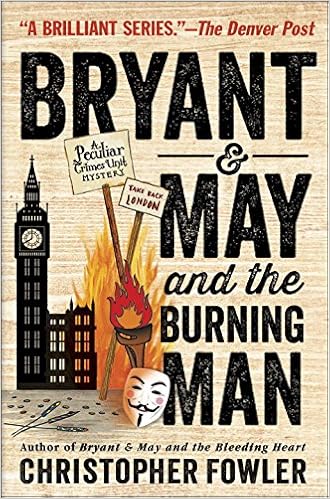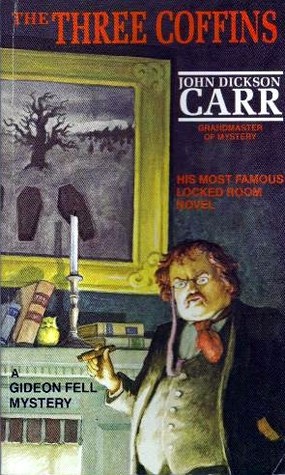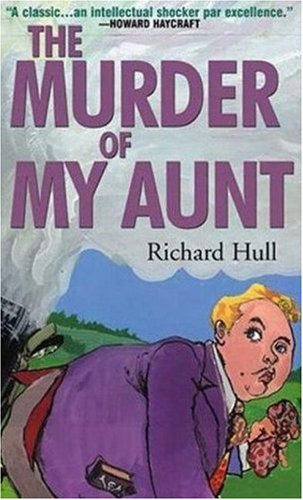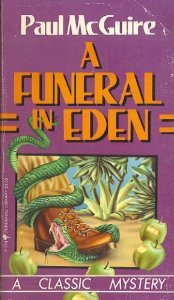

No matter what winter holiday you celebrate, this is the gift-giving season. This week, I'll give you suggestions for some book lovers on your list. We'll start today with so-called Golden Age mysteries, which came into prominence during the 1920s and '30s. Some of the best-known Golden Age authors are Agatha Christie, Dorothy L. Sayers, Ngaio Marsh, Michael Innes, Edmund Crispin, Margery Allingham, Georgette Heyer, Josephine Tey, John Dickson Carr, and Patricia Wentworth. (Sister Mary mentions more in her November 28, 2015 post.) If you're not personally familiar with these writers, don't dismiss them out of hand as being too old-fashioned to bother with. Golden Age books can be witty or charming and are also great for readers of more modern traditional mysteries inspired by the Golden Age, such as those by Simon Brett, Peter Lovesey, and Sarah Caudwell, in which violence is mostly off-stage. (We'll talk about traditional mysteries on another day.)
There are many terrific books a Golden Age fan may not have read, and you can find them in a good used bookstore or online. On the list below, I've starred books for people who have oodles of Golden Age mysteries under their belts; they probably haven't read these unless they're connoisseurs of the period. Needless to say, I haven't tried to be comprehensive. If you want more recommendations, I'm happy to supply them. I've also included some other gift suggestions, if you want an accompaniment for your book.
Margery Allingham
More Work for the Undertaker features Albert Campion and the eccentric Palinode family, now reduced to poverty and further reduced by murder.
Accompany with: a word game such as
Scrabble (poison-pen letters feature in this book)
Francis Beeding
*
Death Walks in Eastrepps recounts one unexpected murder after another in a quiet English coastal village, Old Bailey proceedings, and a surprise ending.
Accompany with: trivets in the shape of fish or boats
Nicholas Blake
Shell of Death (APA
Thou Shell of Death), set on Christmas weekend in an English country house, involves a suicide staged to look like murder.
Accompany with: the vintage card game
Authors (Blake is the pen name of poet Cecil Day-Lewis, father of actor Daniel Day-Lewis)
Agatha Christie
And Then There Were None (APA
Ten Little Indians) features strangers on a private island dropping like flies, one by one.
Accompany with: something that also disappears, one after another, such as a plate of homemade cookies (Maida Heatter's recipes are sensational) or some delicious artisan chocolate from
Portland, Oregon,
Seattle or
New York City. (If you were born in Europe, clutching French candy or a Swiss chocolate in your hand, you don't need help from me.)
John Dickson Carr
The Three Coffins (APA
The Hollow Man), a "locked-room" mystery, contains Dr. Gideon Fell's famous "Locked-Room Lecture."
Accompany with: a charm bracelet that carries a tiny key; a lockable box for little treasures
Cyril Hare
Tragedy at Law takes place as Judge Barber receives threatening letters while traveling the English Southern Circuit and is told from the viewpoint of down-at-the-heels lawyer Francis Pettigrew.
Accompany with: some beautiful stationery and a snazzy pen
[Note: Sister Mary previously mentioned Hare's
An English Murder, a winter must-read due to its snowed-in English country house setting. I'm mentioning it again here because I love it, and it would be perfectly accompanied by a pair of warm slippers or a beautiful little snow globe.]
Georgette Heyer
No Wind of Blame assembles an oddball cast of characters at the English country house of a good-natured, wealthy American widow and then kills off the most likely candidate for being murdered.
Accompany with: a bottle of Russian vodka (one of the characters is an iffy Russian prince)
Richard Hull
*
The Murder of My Aunt is told from the viewpoint of a satisfactorily unpleasant young man who plots to kill his aunt, no great prize herself, for an inheritance.
Accompany with: a board game that requires strategy, such as
Monopoly or
Risk
Michael Innes
Hamlet, Revenge! involves an amateur production of
Hamlet during a house party at the Duke of Horton's palatial home, and a young Inspector John Appleby investigates the murder of one of the players.
Accompany with: a DVD of
Hamlet, of course
Paul McGuire
*
A Funeral in Eden (APA
Burial Service) features a stranger found with his head bashed in on an idyllic island beach.
Accompany with: ingredients for piña coladas, tiny paper umbrellas, and appropriate glasses
Dorothy L. Sayers
Murder Must Advertise takes place at a London advertising agency full of clever ad writers.
Accompany with: a T-shirt carrying a famous advertising jingle or the maker's name on the front
The Nine Tailors, an exceedingly atmospheric book, finds Sir Peter Wimsey and Bunter stranded at an East Anglia rectory in time to help bell ringers usher in the New Year.
Accompany with: some homemade muffins (trust me, the reader will need some when reading this) or some English stout
If you haven't yet read Josephine Tey's
The Daughter of Time, a crime fiction classic, buy it for yourself. This is the one in which Inspector Grant, confined to his hospital bed, decides to tackle the guilt or innocence of Richard III in the deaths of the two princes in the Tower. For proper reading, you'll also need a bed tray for reading in bed, but don't feel you need to eat jello or other bland, hospital-like food. I suggest accompanying this book with hot tea or hot chocolate and cookies.



















